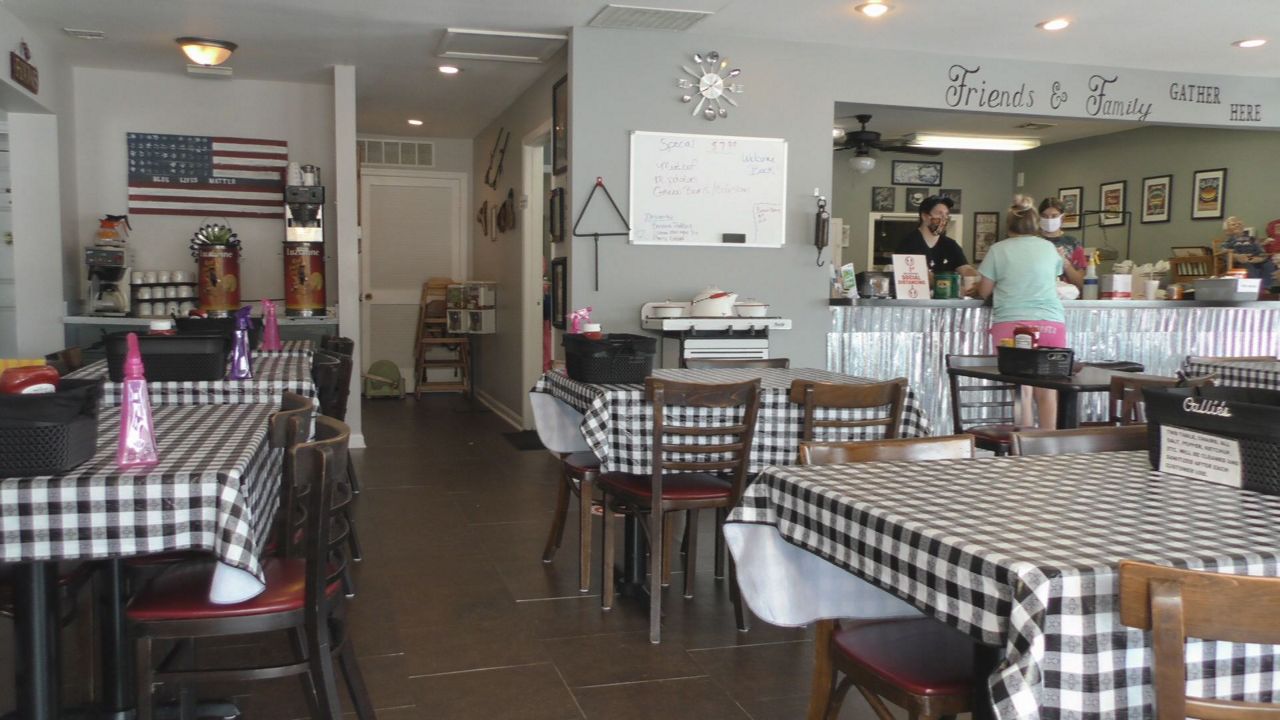LOUISVILLE, Ky. — Bars and restaurants in Kentucky must cease in-person service for three weeks starting Friday, Gov. Andy Beshear announced this week. It was one of a handful of restrictions aimed at slowing the rapid spread of COVID-19 in the commonwealth, but it may be the most controversial.
“I don’t feel good about it,” Kentucky Restaurant Association president Stacy Roof told Spectrum News 1 after Beshear’s announcement Wednesday. Republican Congressman Thomas Massie tweeted that the order will “bankrupt many” restaurants and Republican leaders in Frankfort said Beshear failed to provide them with “any contact tracing based data on where cases are spreading in Kentucky.” The implication was that bars and restaurants are being unfairly targeted.
Beshear attempted to justify the restrictions in both Wednesday and Thursday’s press briefings. On Thursday, he mentioned contact tracing data from the Barren River District Health Department showing more than 46 COVID-19 “clusters” related to restaurants. He also cited success other states have had in slowing the spread of the virus after barring in-person dining.
On Wednesday, Beshear pointed to data from Stanford University, Johns Hopkins University, and the Centers for Disease Control and Prevention (CDC), which he said have all provided evidence that bars and restaurants are “by far the biggest spreaders" of COVID-19.
"When all of the public health officials everywhere can tell us the most likely places to spread, we’ve got to be able to accept that,” he said.
The study from the Stanford researchers, which was published in the journal Nature earlier this month, relied on cell phone data to retrace the movements of 98 million people in 10 of the country’s largest cities this spring. It found that restaurants were the biggest drivers of new infections, due to factors including the high number of restaurants and the amount of time people spend dining out. “Restaurants were by far the riskiest places, about four times riskier than gyms and coffee shops, followed by hotels” said Jure Leskovec, a Stanford computer scientist and one of the authors of the report.
Separately, a study from the CDC published in September found that COVID-19 positive patients were more likely to report having visited a restaurant in the two weeks before their diagnosis than those with negative tests. The study involved surveying 154 COVID-positive patients and 160 people who had not contracted the coronavirus. Those who were positive were about twice as likely to have dined out prior to their diagnosis.
Meanwhile, an analysis of 30 million charges to Chase credit and debit cards showed that higher levels of spending at restaurants were linked to a spike in cases in the same areas three weeks later. The same analysis showed that higher levels of spending at grocery stores were linked to slower spread of the virus. In September, The Washington Post reported that Colorado and Louisiana — two of the states that make contact tracing data public — traced roughly 20 percent of cases to bars and restaurants.
Professor Craig Martin, the Associate Dean of University of Kentucky’s College of Pharmacy, said this data, along with simple logic, is enough to suggest that limiting capacity at bars and restaurants will slow the spread of the virus.
“If you step back and think about it logically, I think what you see are several risks combining in one location,” he said. “As an example, some restaurants may have poor ventilation. That would be one risk. Some have seats that are close together. That would be a risk. And almost by definition, everyone in there who is a customer will not be wearing a mask. So that’s another.”
While some Republican lawmakers and Roof of the Kentucky Restaurant Association have called for Kentucky specific data to show that COVID-19 is spreading at bars and restaurants, Martin said the national data should suffice. “I have no reason to believe that bars and restaurants in Kentucky are any different from bars and restaurants anywhere else in the United States,” he said.
Leaders with the National Restaurant Association contend that eateries are being unfairly targeted. In a letter this week to the National Governors Association, group president Tom Bené wrote that “data tying systemic community outbreaks of COVID-19 to restaurants has yet to emerge.” He also suggested that decisions about restaurant closures should be made using contact tracing data “not hypothetical simulations,” a likely reference to the Stanford cell phone study.
But given the mounting death toll in the United States and the ever-increasing positivity rate in Kentucky, Martin said it’s clear something must be done. The data and common sense suggest that the something should relate bars and restaurants, he said.
“What we have to do is look and see where the areas of suspicion are, and I think we have plenty of data to suggest bars and restaurants are among those areas,” Martin said. “I don’t think they're the only places, and I hate to see them singled out, but we can’t apply our wishes to the data.”
